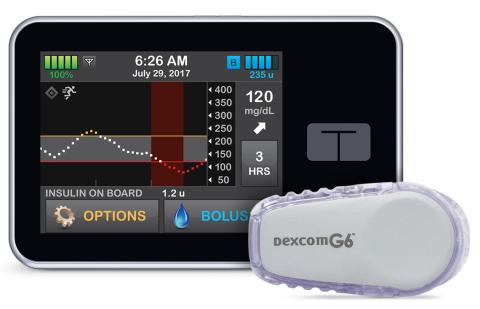Artificial Pancreas System Better Controls Blood Glucose Levels Than Current Technology

Photo: Tandem Diabetes Care
A multicenter randomized clinical trial evaluating a new artificial pancreas system—which automatically monitors and regulates blood glucose levels—has found that the new system was more effective than existing treatments at controlling blood glucose levels in people with type 1 diabetes. The trial was primarily funded by NIDDK.
The study showed that the system improved participants’ blood glucose control throughout the day and overnight. The latter is a common but serious challenge for children and adults with type 1 diabetes, since blood glucose can drop to dangerously low levels when a person is asleep. The research is published in the New England Journal of Medicine.
The artificial pancreas, also known as closed-loop control, is an “all-in-one” diabetes management system that tracks blood glucose levels using a continuous glucose monitor (CGM) and automatically delivers the hormone insulin when needed using an insulin pump. The system replaces reliance on testing by fingerstick or CGM with separate delivery of insulin by multiple daily injections or a pump.
